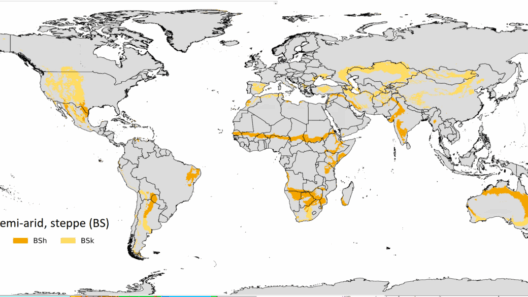Rainforests, often regarded as the emerald crowns of our planet, are lush ecosystems teeming with an astonishing array of life. Their climate plays a pivotal role in shaping the biodiversity and ecological dynamics that define these vibrant habitats. Understanding rainforest climate is essential to grasping the intricate web of life it supports and the critical functions it serves on Earth.
At its essence, rainforest climate is characterized by high temperatures and excess precipitation. Situated near the equator, these biomes bask in a perpetual embrace of warmth, typically maintaining average temperatures between 20°C to 30°C (68°F to 86°F). This tropical warmth creates a sanctuary for countless flora and fauna, where light filters through the dense canopy, nurturing life in a multitude of forms.
Precipitation in rainforest regions is nothing short of spectacular. Annually, these verdant realms receive a deluge ranging from 1750 to 2000 millimeters (69 to 79 inches), creating an environment saturated with moisture. This near-constant rainfall is what differentiates rainforests from other forest types and is responsible for their rich biodiversity. The relentless drip of raindrops reverberating against leaves mirrors the steady heartbeat of these ecosystems, a rhythmic pulse that sustains the myriad organisms inhabiting their depths.
Rainforest climates can be broadly categorized into two types: tropical rainforests and temperate rainforests. Tropical rainforests thrive in equatorial regions, where the climate is relentlessly warm and humid year-round. In contrast, temperate rainforests, found in cooler coastal areas, exhibit distinct seasons and receive ample rainfall, yet never reach the sweltering temperatures of their tropical cousins. Each type presents a unique environment with specific characteristics, but both share the essential features of high humidity and abundant precipitation.
The incredible humidity within rainforests supports a spectacular range of plant life. The towering trees, often reaching heights of over 60 meters (197 feet), form a thick canopy that shelters epiphytes, ferns, and understory plants below. This vertical stratification creates niches that contribute to the forest’s biodiversity. The interactions between these plants—those that thrive in shade versus those that bask in sunlight—illustrate the complex relationships fostered by the rainforest climate.
In the understory, where sunlight is limited, a rich collection of plants has evolved. Many species have adapted to thrive in the low-light environment, showcasing glistening, waxy leaves that repel excess water and maximize photosynthesis. The unique adaptations underscore the resilience of life in these enduring ecosystems. Indeed, each species serves a vital role, from contributing to the forest’s stability to providing sustenance for animals.
The unique microclimates within a rainforest also contribute to its allure. As moisture evaporates from the forest floor and leaves, it creates a humid atmosphere that nourishes the surroundings. This process fosters the development of a living tapestry that includes not only trees but also a kaleidoscope of animals—from charismatic elephants to elusive jaguars. The dense foliage acts as both a shield and an incubator, ensuring that life flourishes beneath its vibrant canopy.
Moreover, the rainforest climate is intricately linked to global weather patterns. Rainforests act as vast carbon sinks, absorbing enormous quantities of carbon dioxide and mitigating climate change. The lush green interiors, often referred to as the lungs of the Earth, purify the air and regulate local and global climate systems. This mechanism is essential for sustaining our planet’s health and weather stability.
However, the delicate balance of rainforest climates is under threat. Deforestation, driven by agricultural expansion, logging, and urbanization, jeopardizes the stability of these ecosystems. As trees are felled, the intricate web of life that depends on the rainforest crumbles. The loss of biodiversity is a poignant reminder of the urgent need for conservation efforts. Rainforests, once viewed as an inexhaustible bounty, are now recognized as finite resources requiring immediate action to safeguard their future.
Encouragingly, there is a growing global awareness regarding the importance of rainforest preservation. Efforts such as reforestation, sustainable timber practices, and eco-tourism are becoming vital components of conservation strategies. By raising awareness and fostering a sense of responsibility, we can begin to mend the rifts in our relationship with these vital ecosystems.
In conclusion, the rainforest climate is the pulsating heart of the Earth’s vibrant ecosystems. The interplay of warmth and moisture creates a cradle for unparalleled biodiversity, a living testament to nature’s ingenuity. As stewards of this planet, we must recognize the value of these incredible habitats and the intrinsic bond we share with them. Fostering respect and vigilance is imperative for ensuring that future generations can revel in the splendor of the world’s lush, green sanctuaries.








